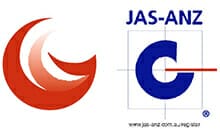Powdered Metal vs Forged Metal Parts | What’s the difference?
Choosing the right metal fabrication process is a critical decision for manufacturers, as it directly impacts the quality, durability, and cost-effectiveness of the final product. Two commonly used processes are powdered metal and forging, with each method having its unique characteristics and advantages. Today we will explore the basics of both processes and their typical applications to help you choose the best one for your next project.
Powdered metal vs forging process
The powdered metal process involves creating a component from metal powder, which is first compacted in a die and then heated (a process known as sintering) to create a solid, cohesive piece. This method is highly efficient and offers precise control over the finished product’s dimensions, often reducing the need for additional machining. The ability to mix different metal powders allows manufacturers to create custom alloys with specific properties. Typical products made using this process include gears, sprockets, and other complex shapes that are difficult to produce through other methods. This process is particularly popular in the automotive industry, where it’s used to manufacture parts like piston rods, bushings, and connecting rods.
Forging, on the other hand, is a more traditional metalworking process where a piece of metal is heated until it’s malleable and then hammered or pressed into the desired shape using a die. The process realigns the metal’s grain structure, which enhances the strength and durability of the final product. Forging is generally classified into three types: open-die forging, closed-die forging, and upset forging. These types of forging are widely used to create parts that need to withstand significant stress and/or high and low temperatures, such as aeroplane parts, crankshafts, and steel bars for construction.
Strength and durability
When selecting a material and production method for manufacturing applications, the strength and durability of the final product are crucial considerations. As an example, we will compare powdered metal rods vs forged steel rods to highlight the distinct characteristics and advantages of each process.
Powdered metal rods
Powdered metal rods are made by compacting metal powder into a mould and then sintering it at a high temperature, which bonds the particles together without completely melting them. The powdered metal process is precise and can create complex shapes with high dimensional accuracy. However, the strength and durability of powder rods can be somewhat lower than that of forged steel rods, especially under fatigue loading conditions. Moreover, powdered metal parts may have some porosity, which can lead to a less dense and consequently less durable final product in certain high-stress or high-impact applications.
Forged steel rods
In contrast, forged rods are produced by heating a piece of steel until it’s malleable and then using force to shape it in a die. The forging process causes the steel’s grain structure to align along the lines of force, mirroring the shape of the part. This results in a continuous and aligned grain structure throughout the part, significantly enhancing the part’s strength and impact resistance. Compared to powdered metal, forged steel has a denser structure, with no inherent porosity, leading to superior durability. Forged parts are therefore more resistant to wear, more capable of withstanding high stresses, and have a longer lifespan, particularly in high-stress, high-impact, or high-temperature applications.
Cost considerations
The powdered metal manufacturing process can often have lower upfront costs. The method is highly efficient, produces less waste, and often reduces the need for additional machining, contributing to cost savings. Also, since powdered metal parts are near net shape, they usually require less material, further lowering the initial expenditure. However, it’s essential to consider the potential trade-offs. Powdered metal rods, while quite durable, might not offer the same lifespan as their forged counterparts, particularly in high-stress or high-impact applications. So, while they may be cheaper to produce initially, they could require more frequent replacement over time, which can increase the total costs.
The forging process can have higher upfront costs. It typically involves more labour and higher energy consumption compared to the powdered metal process. Moreover, since forged parts often start from a billet and material is cut away to achieve the final shape, there can be more waste, which could increase costs. Additional processes, such as heat treatment or finishing, can also add to the initial expense. However, the superior strength and durability of forged steel can result in a longer lifespan, fewer replacements, and less downtime for maintenance. These characteristics can lead to lower total costs over time, especially in demanding applications where component failure can lead to expensive repairs or significant operational disruptions.
When do you use each one?
The powdered metal process is particularly useful when producing parts with complex shapes or intricate details. The process can achieve high dimensional accuracy, often reducing the need for subsequent machining. This makes it a good fit for manufacturing gears, sprockets, and other parts with complex geometries. In addition, the powdered metal process allows for the mixing of different metal powders, enabling the creation of custom alloys with specific properties. This can be advantageous in applications where specific material characteristics are needed.
On the other hand, forged steel rods excel in high-strength applications. The forging process aligns the grain structure of the steel, resulting in parts with superior strength and impact resistance. This makes them ideal for use in high-stress, high-impact, or high-temperature applications. For instance, in the automotive and aerospace industries, forged steel is often the material of choice for critical components like crankshafts, connecting rods, and aircraft landing gear. These components need to withstand significant stress and strain, making the strength and durability of forged steel a key advantage. Moreover, the high density and lack of porosity in forged steel make it more resistant to wear and corrosion, adding to its suitability in demanding applications.
Greg Sewell Forgings
At Greg Sewell Forgings, we specialise in forged custom metal fabrication and can produce a variety of designs. Our 90 years in the industry bear witness to the quality of our products and our ability to adapt to modern processes and new technology. Explore our manufacturing capability and read our guide to ordering forged steel products for more information regarding the process.
If you have any questions or need a product developed, contact us today! One of our friendly team members will be happy to help you.





